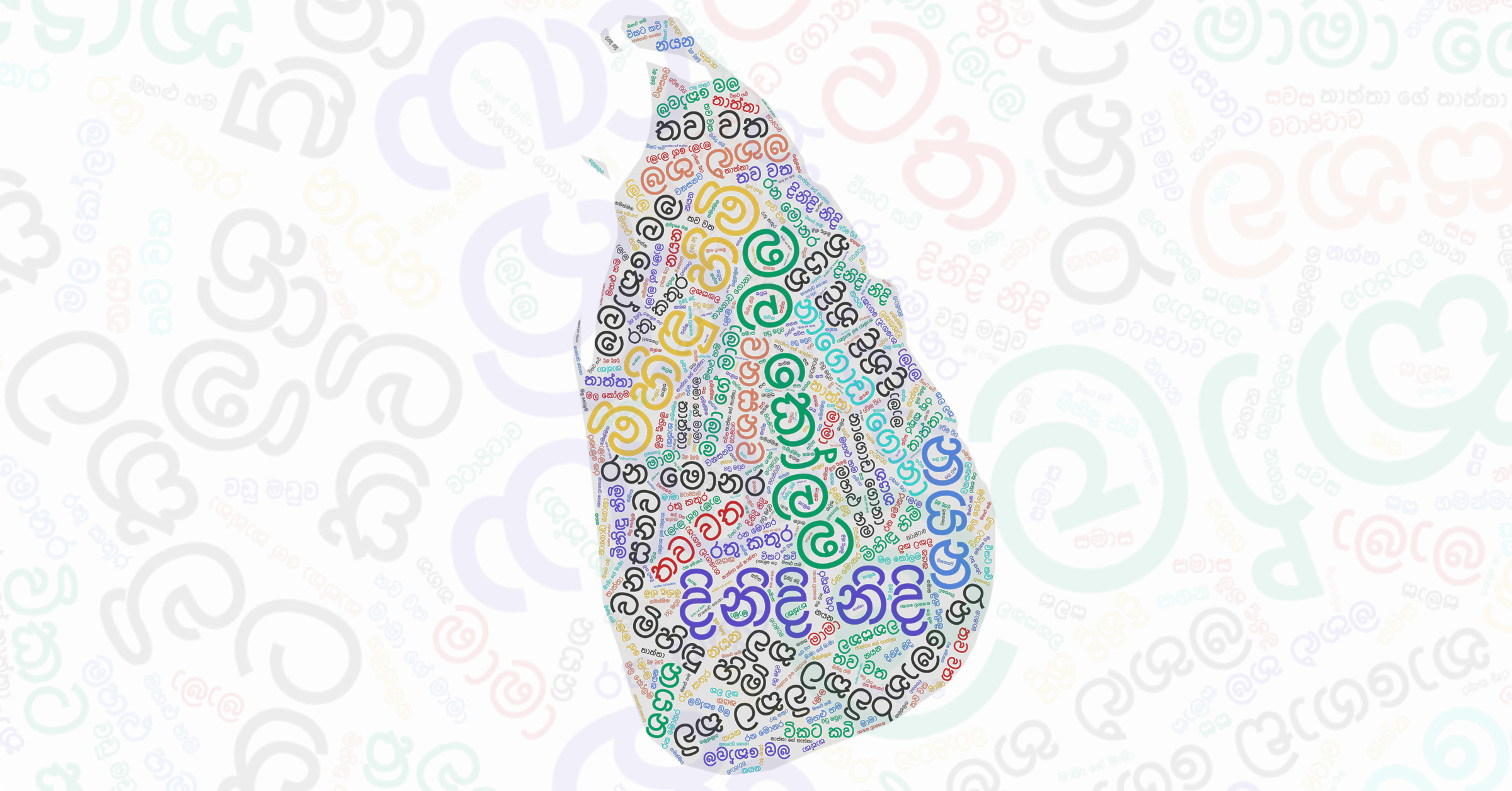Palindromes are words, phrases or sequences that read the same forwards and backwards. They are interesting due to their symmetry. There is no singular term for palindromes in Sinhalese. But in the study of Sinhala poetry, there is a poetic device employing repetition of sounds known as Prathilōma Yamaka (/prəθɪlɔːmə jʌməkə/; Sinhala: ප්රතිලෝම යමක)[1], which loosely translates to “reversed repetition”.
This post first lists some palindromes in Sinhala. Next, I share some thoughts on the difficulty in creating Sinhala palindromes compared to English.
List of Sinhala Palindromes
| Palindrome | Meaning |
| වටාපිටාව | Surrounding |
| මල කෝලම | Nonsense |
| රතු කතුර රතු වතුර රතු යතුර රතු පතුර | Red scissor Red water Red key Red splinter/chip |
| ගමන්මග | Path |
| වඩු මඩුව | Carpenter’s shed/workshop |
| රන මොනර | A type of peacocks. (literally war peacock. Used in literary contexts). |
| මහළු හම | Old/elderly skin |
| මිහිඳු හිමි | Mihindu Thero |
| තව වත | Asceticism Ascetic’s story Ascetic’s face Ascetic’s cloth |
| තාත්තා | Father |
| තාත්තා ගේ තාත්තා | Father’s father |
| මාමා | Uncle |
| මාමා ගේ මාමා | Uncle’s uncle |
| සස | Rabbit |
| සමාස | Compound terms (linguistic) |
| සවස | Evening |
| නයන | Eyes |
| නගන | Hordeolum/Stye |
| නග්න | Naked/Nude |
| වනසනව | Destroying |
| විකට කවි | Funny poems |
| දිනිදි නිදි | Dinidi is asleep |
| නාගොඩ ගොනා | Bull of Nagoda |
Palindromes in Sinhala and English Languages
Before we compare how the formation of palindromes differ between Sinhala and English, we first need to know two categories of palindromes:
- Written palindromes – words, phrases or sequences that are spelled the same way forwards and backwards.
- Phonetic palindromes – words or phrases that sound the same when spoken/played forwards or backwards. The spelling can differ between the forward and backward sequences, but the phonetic pronunciation is symmetrical.
In written palindromes, visual symmetry of the sequence of characters is the key characteristic – they look the same in written form when reversed. The meaning often changes when such a palindrome is read backward. For phonetic palindromes, auditory symmetry is the most crucial aspect. These are less common than written palindromes as spoken language has more nuances and variations. Note that these two categories are not mutually exclusive: a written palindrome may very well be phonetically reversible!
Sinhala, with its larger alphabet, seems like it would offer more palindromes, but it’s actually more challenging. This is because Sinhala uses ‘diacritics’ – marks added to letters to alter their sound or to represent a different sound altogether. English treats vowels as individual letters, which allows for more variety when flipping words to create palindromes. So, when you’re trying to form a palindrome in Sinhala, each letter with its diacritics must match exactly in reverse order, limiting the options you have for creating words. As a result, Sinhala palindromes are naturally phonetic as well as written the same way backward. These dual constraints make it easier to find palindromes in English than in phonetically restrictive Sinhala.
English also has phonetic palindromes, which may or may not be spelled the same in reverse. The words “babe”[2] and “dead”[3] each sound similar when played in reverse but are clearly not spelled the same way backwards. On the other hand, “noon” and “deed” satisfy both the phonetic and spelling requirements.
As you may have no doubt noticed, phonetic reversibility is a stronger condition than spelling reversibility. Thus, phonetic palindromes are rarer than mere written ones. Sequences with both properties are of course even harder to find.
References
- ඡන්දෝලංකාරා (Chandolankārā) – Prof. Bihesh Indika Sampath. Page 62. (PDF) ඡන්දෝලංකාරා (researchgate.net).
- On the Distinction Between “Phonetic” Palindromes and “Phonetically” Reversible Words (butler.edu)
- Phonetic Palindromes (butler.edu)
